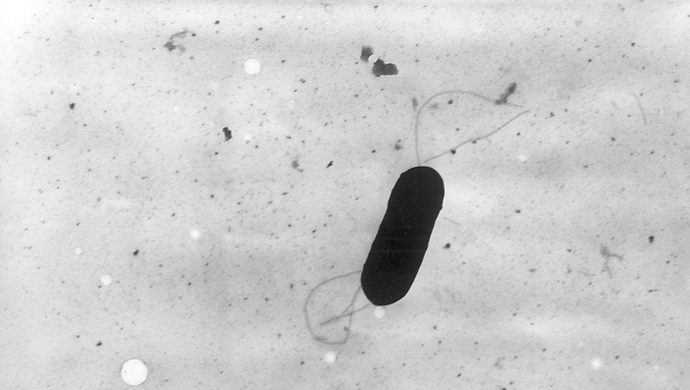Listeriainfektion

Listeriainfektion er en fødevarebåren sygdom, der skyldes infektion med bakterien Listeria monocytogenes. Infektionen viser sig som regel som blodforgiftning eller meningitis hos personer, der har nedsat immunforsvar på grund af høj alder, anden alvorlig sygdom eller graviditet.
I Danmark ses normalt ca. 50 sygdomstilfælde om året. 2009 og 2014 var undtagelser med høj forekomst, idet der disse år var imellem 90-100 tilfælde. Dødeligheden er ca. 25 %.
Listeria monocytogenes kan findes overalt i miljøet og derfor også i mange rå eller let forarbejdede fødevarer. De fleste danskere vil på et eller andet tidspunkt blive smittet med bakterien, men de færreste bliver syge. Det sørger immunforsvaret for.
En listeriainfektion kan give mild febersygdom evt. med diarré. Hos ældre og svækkede personer samt gravide kan der opstå alvorlige komplikationer som blodforgiftning (bakteriæmi/sepsis) eller hjernehindebetændelse (meningitis), og det er disse alvorlige infektioner, der fokus på, når listeriainfektioner omtales.
Kilde: Statens Seruminstitut
NEW YORK, 12 January 2018 (UN News): What is believed to be the largest-ever outbreak of the bacterial disease Listeriosis – or Listeria – has left more than 60 people dead across South Africa, with nearly 750 confirmed cases, the United Nation’s health agency said Friday.
Listeriosis is a serious, but preventable and treatable disease caused by the bacterium, Listeria monocytogenes, which is found in soil, water, vegetation and some animal faeces.
Animal products, including meat and dairy; seafood; and fresh produce, such as fruits and vegetables, can all be contaminated.
Fire af ti er nyfødte børn
“Infants are often a high target of this bacteria,” said Christian Lindmeier, spokesperson for the World Health Organization (WHO), adding that “newborns are about 40 per cent of the infected people.”
Having a three-week incubation period makes it difficult to establish the source and thus, tough to prevent.
“You wouldn’t know what you ate three weeks ago – maybe the one particular food that made you sick three or four weeks later – this is the big challenge we face in this situation,” the spokesperson elaborated.
South Africans are called upon to practice WHO’s ‘Five Keys to Safer Food (download som PDF)’ programme that include washing hands before and often during food preparation; separating raw meat, poultry and seafood from other foods; and cooking foods thoroughly, especially meat, poultry, eggs and seafood.
Mr. Lindmeier underscored the importance for those with weakened immune systems – including the elderly and people living with HIV and cancer – and pregnant women, “who are 20 times more likely to get Listeriosis than other healthy adults,” to exercise care.
Nearly two-thirds of the reported cases have been from the Gauteng province, where Johannesburg and Pretoria are located.
“We have a total now of 748 laboratory-confirmed cases, but then again, this is difficult because many cases may not be even reported,” he said, adding that cases have been found in all socio-economic backgrounds since the outbreak was declared on 5 December.
USA og Italien
The second largest outbreak of Listeriosis was in 2011, when the United States had a total of 147 reported cases. Prior to that, Italy had a large occurrence in 1997.
South Africa has implemented some measures to stem Listeriosis, such as making it a notifiable disease, whereby every Listeriosis-diagnosed patient must be reported.
“And that’s important because Listeriosis is such a big challenge because it is not just the health sector that is involved, it involves all sectors – the food industry, farming – and to find the source is really difficult simply because the incubation period is so long,” Mr. Lindmeier asserted.















